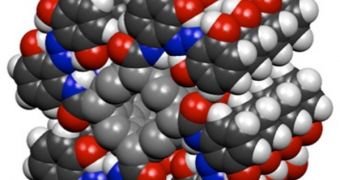A new device created by researchers at the Massachusetts Institute of Technology (MIT), in Cambridge, can hold about the same amount of energy as lithium-ion batteries. The device is made up of carbon nanotubes, which can store sunlight as chemical energy.
This is an all-new applications for carbon nanotubes (CNT), a type of nanoscale structure that has been heavily researched over the past few years. Now, experts at MIT figured out a way to use them for storing energy from the Sun chemically.
The most important thing about the new instrument is that it can store solar energy for as long as needed, releasing it only on demand. Other methods of storing this form of energy involve converting it into electricity or storing the heat itself in a heavily insulated container.
[AMDARK=1]None of these approaches is either feasible for large-scale applications or cheap, while conserving the energy in chemical form is. One of the most important advantages the latter approach has is that the energy can be stored for prolonged periods of time.
Until now, experts tended to ignore this approach for one of two reasons – either the materials and chemicals used degraded after a few loading/unloading cycles, or the devices contained the rare and expensive chemical element ruthenium.
Using CNT in combination with a compound called azobenzene, MIT associate professor Jeffrey Grossman and postdoctoral student Alexie Kolpak managed to improve on a previous design that they presented in 2010.
Details of their innovation appear in the latest online issue of the esteemed journal Nano Letters, and will also appear in an upcoming print issue of the publication. The team explains that the molecules made possible by this mix show properties that are not available in any of the independent components.
When compared to the earlier ruthenium-containing compound, the new one is a lot cheaper, more efficient, and easier to produce. It also has a volumetric energy density level that is 10,000 times higher than that of its predecessor.
“You can control [the molecules’] interactions, increasing the amount of energy they can store and the length of time for which they can store it – and most importantly, you can control both independently,” Kolpak expalins.
“You’ve got a material that both converts and stores energy,” he says. “It’s robust, it doesn’t degrade, and it’s cheap,” Grossman adds. The compound operates in a fairly simple manner, he says.
Sunlight falling on the chemical changes the latter's structure into a secondary, but stable, configuration. When another stimuli (light, heat, a catalyst) is applied, the molecules revert back to their original states, releasing the stored energy as heat.

 14 DAY TRIAL //
14 DAY TRIAL //